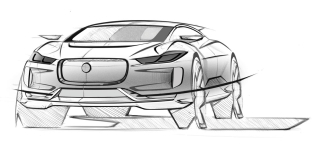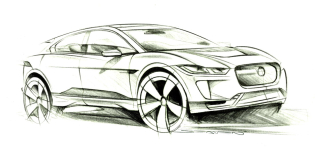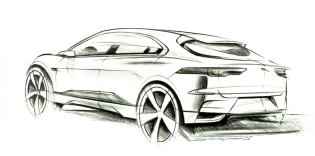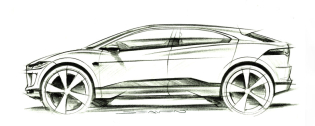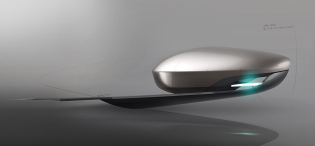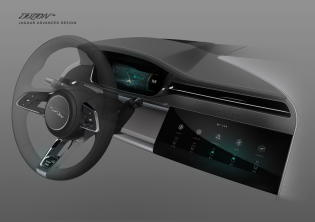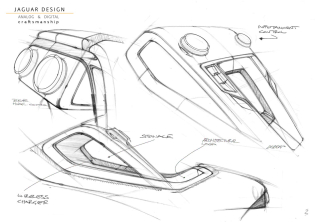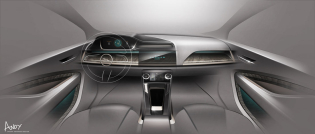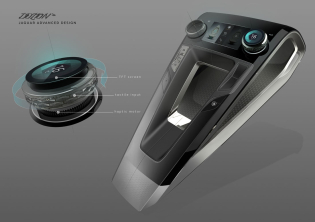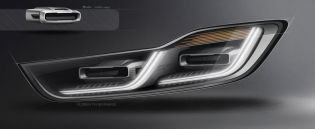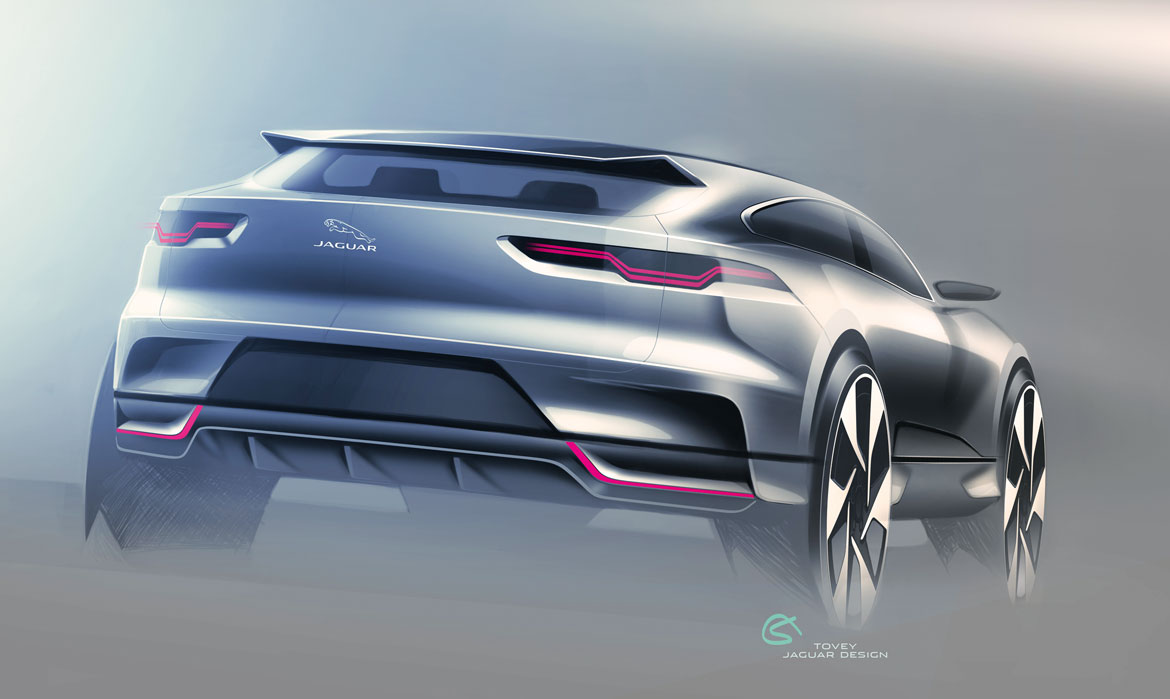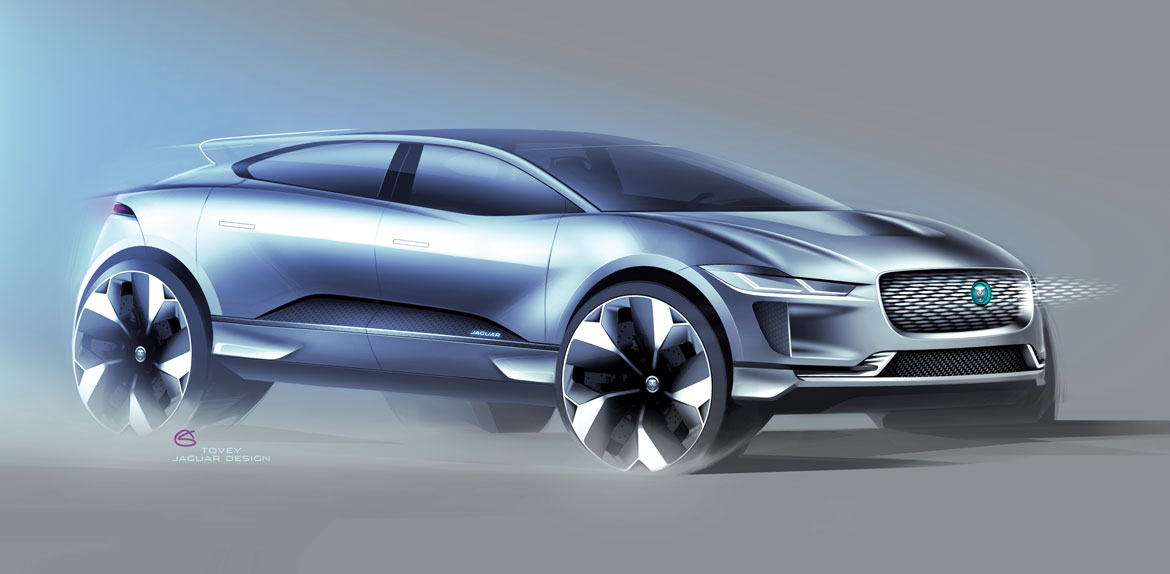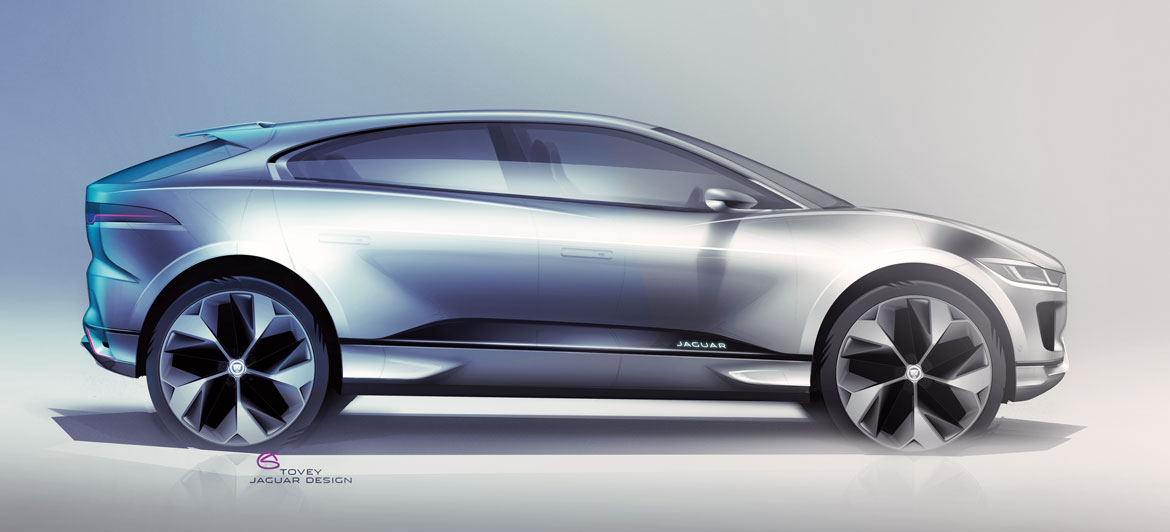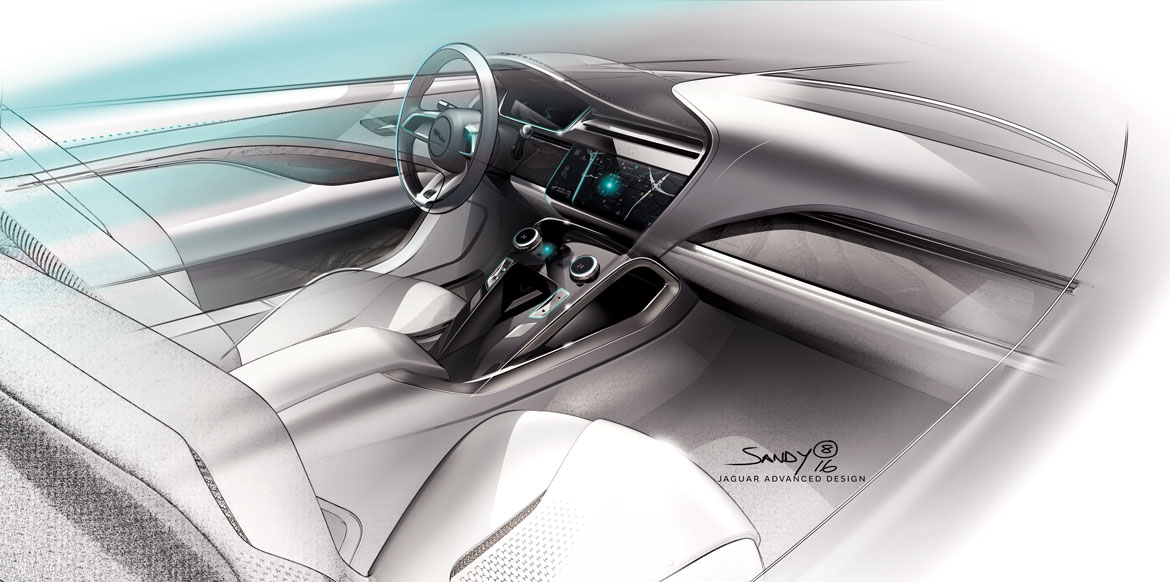“It is the concept car closest to the production model we have ever developed at Jaguar”, says the design chief Ian Callum as he tells us how this working prototype, which is due on the market in 2018 and anticipates the first electric car in Jaguar’s history, was born. “The exterior is 97% the final vehicle, only one or two details will change. We began working on the project about two and a half years ago: since then everybody has been making announcements about new electric cars so we decided to make a concept version, a tangible example of our work”.
A project that Callum does not hesitate to describe as exciting by virtue of its new mechanical base, with a “skateboard” floor pan which houses the batteries that give power to the two electric motors capable of generating 400 bhp and an instant torque of 700 Nm. “This allowed us great freedom for designing the shape above it, as we no longer have the interference of an engine with transmission. The choice of a Suv with a forward cab was quite a challenge. We had been thinking about it for some time and finally we were able to design it without having to follow traditional rules”.
That is how the curious proportions of the I-Pace originated: a restrained front volume, high tail topped by an angular rear window and a roomy cabin set between the vehicle’s two axles, almost as in a mid-engined sportscar. References to the C-X75 coupé (a concept car presented in Paris in 2010, a project to which Callum is very much attached) are evident. “With the I-Pace the revolution is not in the formal language so much as in the profile, made possible by the fact that the car is electric. I was determined to create a design that reflected this change in the mechanicals”.
The consistency with brand styling cues can be particularly appreciated at the front with the hallmark Jaguar grille, “deliberately familiar and recognisable, but never identical, as in all our models”, continues Callum. “Here the front volume is shorter and had to express power: hence the muscular haunches from which it seems the wheels are trying to emerge. The family feeling is also evident in the sporty line of the roof which is made even more energetic by the spoiler which fulfils an important aerodynamic function – one of the themes, this, that saw close cooperation between designers and engineers and which led to a drag coefficient of 0.29, remarkable for a vehicle with such a high tail and total length of 4.68 m.
The cabin was developed under the guidance of head of interior design Alister Whelan and benefited greatly from the new architecture. “We had all the space we needed so we were able to move the seats forward and obtain five real seats without the hindrance of the centre tunnel, and a very capacious luggage compartment”, Callum goes on. A bit less close to the production I-Pace compared to the exterior (specifically, the seats and trim materials are still those of a show car), however even the interior presents themes that will go into production, like the “loop” of the centre console that creates an open compartment for small objects, or the big 12” centre TFT screen, “even though we will not be giving up on a mix of analogic controls which are more functional and safer for certain functions”.
The I-Pace opens up a new age, not just for the Jaguar brand (other electric cars will follow not as a sub-brand but integral to the range, as the name I-Pace indicates) but for design itself.
Full article in Auto&Design no. 222


